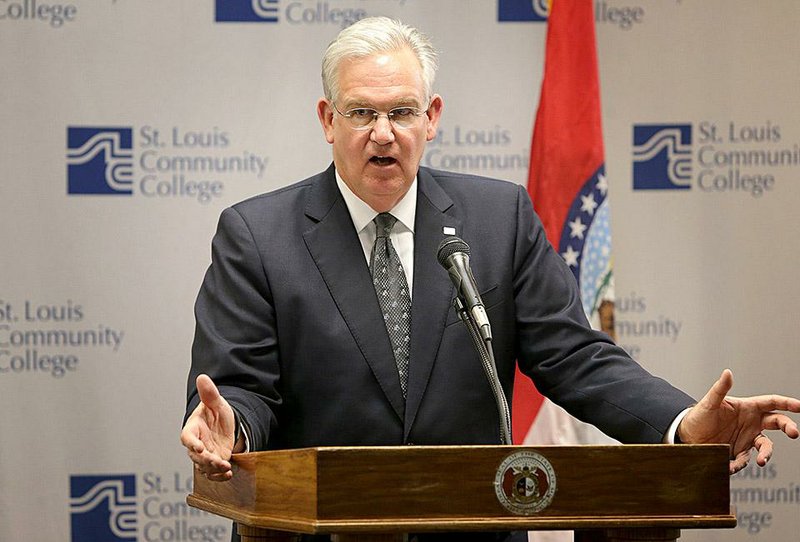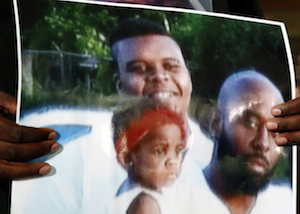ST. LOUIS COUNTY, Mo.-- The official autopsy on Michael Brown shows that the 18-year-old was shot in the hand at close range, according to an analysis of the findings by two experts not involved directly in the case.
The accompanying toxicology report shows he had been using marijuana.
Those documents, prepared by the St. Louis County medical examiner and obtained by The St. Louis Post-Dispatch, provide the most detailed description to date of the wounds Brown suffered in a confrontation Aug. 9 with Ferguson police officer Darren Wilson.
A source with knowledge of Wilson's statements said the officer told investigators Brown struggled for his pistol inside a police sport utility vehicle, and that Wilson fired the gun twice, hitting Brown once in the hand. Later, Wilson fired additional shots that killed Brown and ignited a national controversy.
The St. Louis city medical examiner, Dr. Michael Graham, who is not part of the official investigation, reviewed the autopsy report for the newspaper. He said Tuesday that it "does support that there was a significant altercation at the car."
Graham said the examination indicated a shot traveled from the tip of Brown's right thumb toward his wrist. The official report notes an absence of stippling, powder burns around a wound that indicate a shot fired at relatively short range.
But Graham said, "Sometimes when it's really close, such as within an inch or so, there is no stipple, just smoke."
The report on a supplemental microscopic exam of tissue from the thumb wound showed foreign matter "consistent with products that are discharged from the barrel of a firearm."
Dr. Judy Melinek, a forensic pathologist in San Francisco, said the autopsy "supports the fact that this guy is reaching for the gun, if he has gunpowder particulate material in the wound." She added, "If he has his hand near the gun when it goes off, he's going for the officer's gun."
Sources told the Post-Dispatch that Brown's blood was found on Wilson's gun.
Melinek also said the autopsy does not support witnesses who have claimed Brown was shot while running away from Wilson or with his hands up.
She said Brown was facing Wilson when he took a shot to the forehead, two shots to the chest and a shot to the upper right arm. The wound in the top of Brown's head would indicate he was falling forward or in a lunging position toward the shooter. That wound was instantly fatal.
A sixth shot that hit the forearm traveled from the back of the arm to the inner arm, which means Brown's palms could not have been facing Wilson, as some witnesses have said, Melinek said. That trajectory shows Brown likely was not taking a standard surrender position with arms above the shoulders and palms out when he was hit, she said.
The county medical examiner, Dr. Mary Case, could not be reached. The assistant who performed the autopsy, Dr. Gershom Norfleet, relayed word that he would not comment.
That postmortem, conducted the morning after Brown's death, comports in most ways with the findings of a private autopsy arranged by Brown's family and made public Aug. 18.
In that one, Dr. Michael Baden, a nationally known forensic pathologist, said none of Brown's wounds appeared to have been from shots fired at close range.
Baden noted then that there was no gunshot residue on the body, so it appeared to him that the muzzle of the weapon was at least 1 or 2 feet away. He said, "It could have been 30 feet away."
A third autopsy was ordered by federal officials as part of their investigation of the shooting. Results of that one have not been revealed.
The county and private autopsies agree on the number and location of the wounds.
The toxicology test, performed by a St. Louis University laboratory, revealed tetrahydrocannabinol, known as THC for short, in Brown's blood and urine.
Alfred Staubus, a consultant in forensic toxicology at the Ohio State University College of Pharmacy, said THC can impair judgment or slow reaction times, but there is no reliable measurement to make those conclusions.
States that have legalized marijuana have struggled with the issue of how to measure impairment.
"The detection of THC in the postmortem blood of Michael Brown really indicates his recent use of marijuana (within a few hours) and that he may or may not have been impaired at the time of his death," Staubus wrote in an email.
On Tuesday, Missouri Gov. Jay Nixon said an independent commission will be created to study issues that have surfaced since Brown's shooting.
Nixon, who has been criticized by some residents and activists who say he hasn't done enough to address the unrest in the St. Louis suburb, said the Ferguson Commission will examine the social and economic conditions underscored by the weeks of protests after the shooting.
The Democrat outlined his plan for the commission, which will be created by executive order, during a news conference at St. Louis Community College's Florissant Valley campus. The group's goals are broad and its members won't be announced until next month.
The shooting of Brown has spurred unrest that has drawn the national spotlight to Ferguson, including violent protests in the immediate aftermath of the Aug. 9 shooting and calls for the white officer who killed Brown to be arrested and charged.
Nixon said the commission will have no role in investigating Brown's death. A grand jury in St. Louis County is hearing evidence on whether Wilson should be criminally charged and is expected to announce its decision next month. The Justice Department has also opened a civil-rights investigation.
Information for this article was contributed by Christine Byers and Blythe Bernhard of the St. Louis Post-Dispatch and by Jim Salter of The Associated Press.
A Section on 10/22/2014


